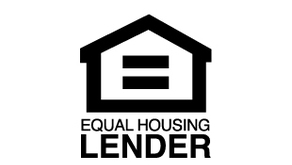
Importance of Low-Interest Rates
There is very little margin in the rates right now. Margin is the difference in pricing from one rate to the next. In simple terms, 4.0% would be worth less than 4.25% because the lower interest rate generates less interest for an investor throughout the loan repayment period. So that investors will “pay” more for the higher rate. The amount they “pay” is called margin. Frankly, that is how I get paid or how I cover closing costs on a refinance. But there is less of that margin, or money, in the higher rates right now. That is important due to one reason: risk factors. Fannie Mae and Freddie Mac have risk factors built into their pricing of rates. This has to do with historical data that suggests whether or not a loan is more or less likely to go into foreclosure.
Example: if you have an 800 credit score and I have a 700 credit score, I’m more likely to go into foreclosure than you are because of my poorer credit history. So there is risk pricing that is built into my rate. That is typically absorbed by the margin difference between the rates. But there is not a lot of margin difference between those rates currently. So instead of your score securing a rate of 4.0% and my credit score secured a rate of 4.25%, my rate now might be more like 4.5% (these are not actual rates, but I’m making them up to illustrate the point). Likewise, something we all see a lot of in the city is condos. If you have less than 25% down, there is a risk factor that increases the cost and, hence, the rate. Typically that equates to a .25% difference in rate. But now it might be more like .375%, again depending on each particular scenario. Other risk factors that you will commonly run into are investment properties, 2-4 unit buildings, escrow waivers (for banks that charge for them—we have options to do this at no cost to the buyers).
So while some buyers might be in much better shape than they were a few days ago, others might be in only slightly improved situations due to the lack of margin coming back into the market. We’ll have to see how this shakes out over the coming days/weeks. If you have any questions, please always feel free to reach out or have your clients do so if they have any questions or concerns.
Hang in there. We’re in a much better position than we were in 2008 when our economy was built on a house of cards (no pun intended). We will get through this.
Additional Read: What Do Rates Mean To Me?
A and N Mortgage Services Inc, a mortgage banker in Chicago, IL provides you with high-quality home loan programs, including FHA home loans, tailored to fit your unique situation with some of the most competitive rates in the nation. Whether you are a first-time homebuyer, relocating to a new job, or buying an investment property, our expert team will help you use your new mortgage as a smart financial tool.






